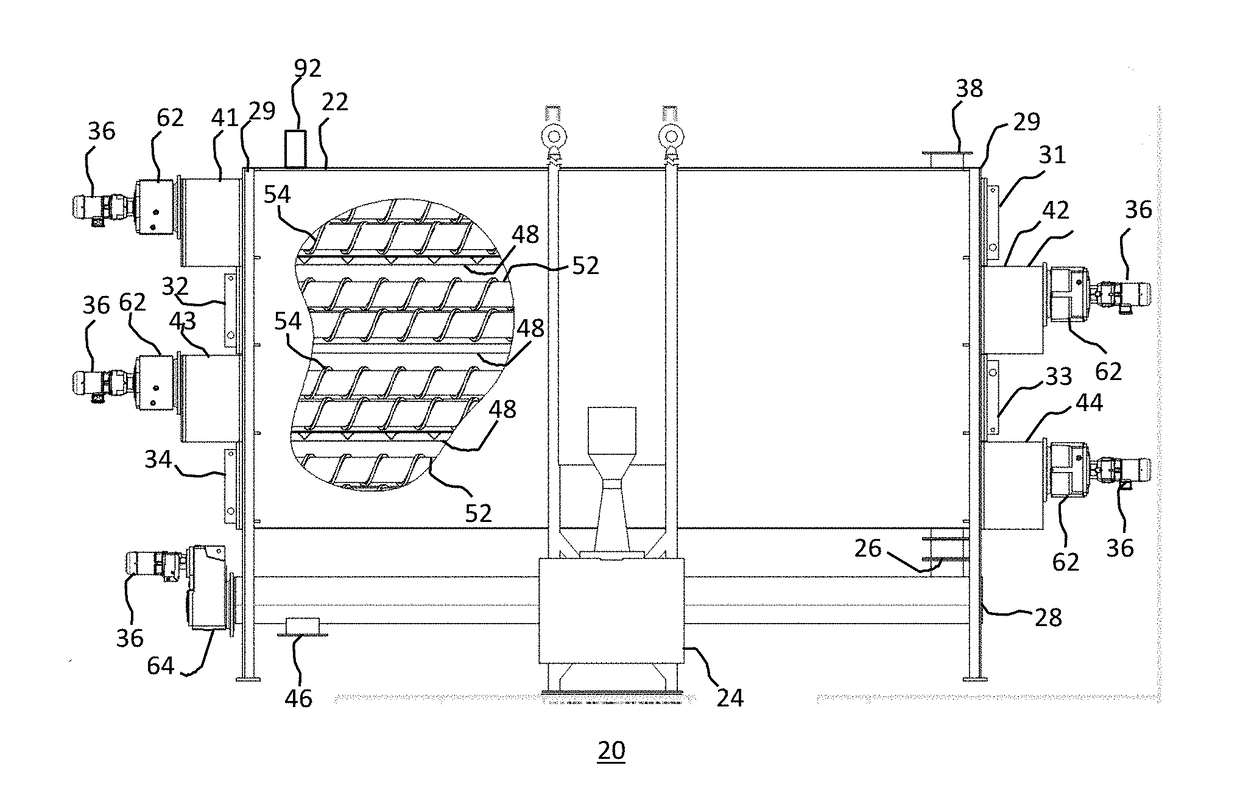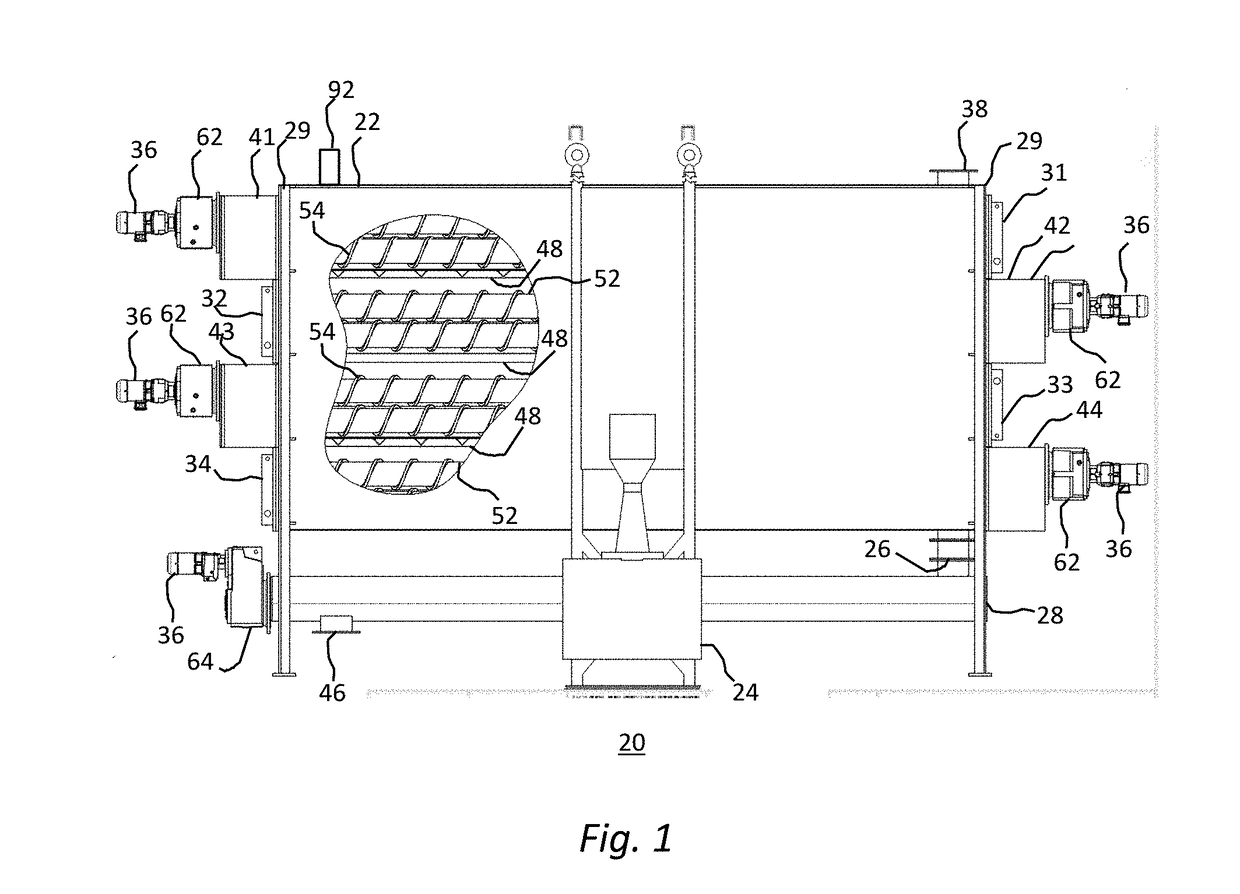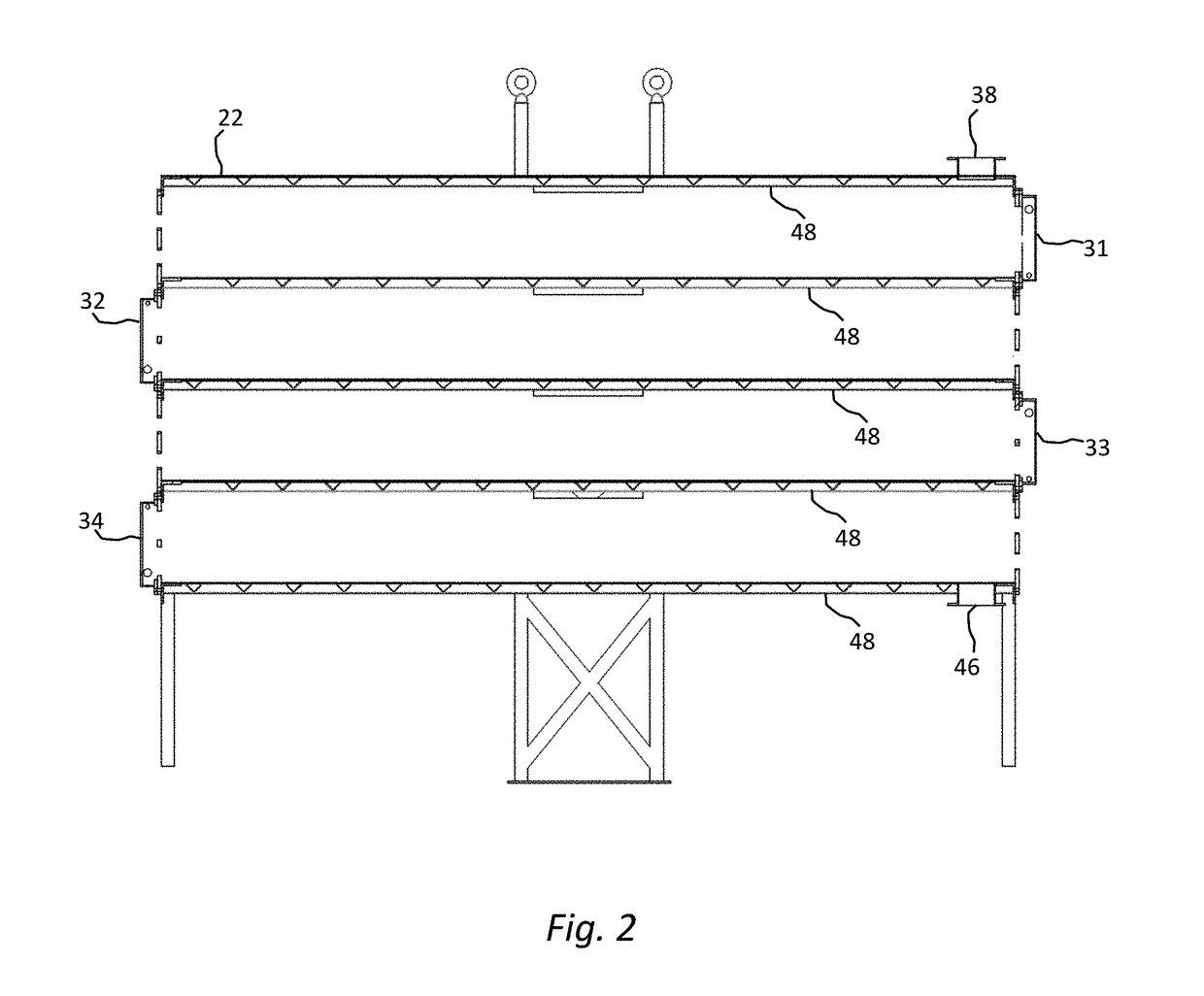Heat exchanger with thermal fluid-containing shaft and shaft-riding auger for solids and slurries
a technology of heat exchanger and shaft, which is applied in the direction of lighting and heating apparatus, dryers with progressive movement, furnaces, etc., can solve the problems of large surface area large surface area achieved at a penalty in overall size and cost, and large surface area achieved at a small volume , the effect of increasing the rotation ra
- Summary
- Abstract
- Description
- Claims
- Application Information
AI Technical Summary
Benefits of technology
Problems solved by technology
Method used
Image
Examples
Embodiment Construction
[0055]FIG. 1 shows a side elevational view of a first exemplary embodiment of the heat exchanger in accordance with the present invention, shown generally at 20, having a housing 22, first through fourth steam chests 31, 32, 33, and 34, first through fourth transport systems 41, 42, 43, and 44, a condenser 24, an air lock 26, a discharge system 28, motors 36, a feed material inlet 38, a feed material outlet 46, conveyor drives 62 and discharge drive 64. Partially cut away, this view shows trays 48, pipes 52, and transport augers 54 located inside the housing 22.
[0056]FIG. 2, a side sectional view of the embodiment of FIG. 1, shows the housing 22, first through fourth steam chests 31, 32, 33, and 34, feed material inlet 38, feed material outlet 46, and trays 48.
[0057]FIG. 3, a perspective view of the embodiment of FIG. 1, shows the housing 22, first and third steam chests 31 and 33, first through fourth transport systems 41, 42, 43, and 44, a condenser 24, an air lock 26, a discharge...
PUM
 Login to View More
Login to View More Abstract
Description
Claims
Application Information
 Login to View More
Login to View More - R&D
- Intellectual Property
- Life Sciences
- Materials
- Tech Scout
- Unparalleled Data Quality
- Higher Quality Content
- 60% Fewer Hallucinations
Browse by: Latest US Patents, China's latest patents, Technical Efficacy Thesaurus, Application Domain, Technology Topic, Popular Technical Reports.
© 2025 PatSnap. All rights reserved.Legal|Privacy policy|Modern Slavery Act Transparency Statement|Sitemap|About US| Contact US: help@patsnap.com



